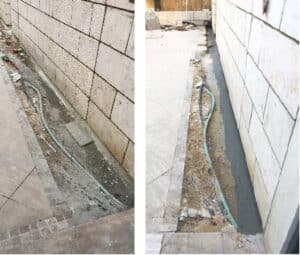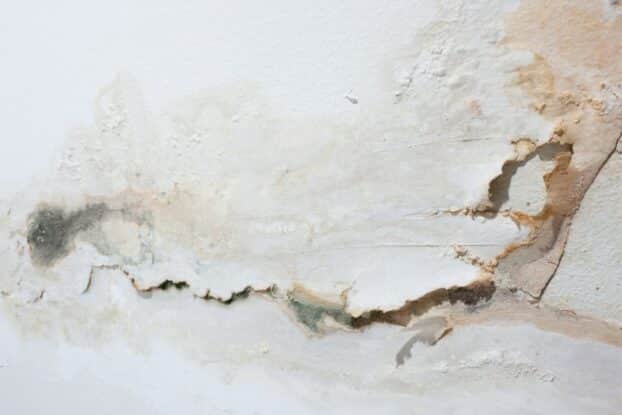Dampness and condensation are probably the most common construction/structural issues found in homes in Israel and can be the cause of serious and expensive problems to repair. If neglected they can dangerously harm a property and seriously affect the quality of life of those who occupy it. The accumulative damage caused by dampness can result in extremely high expenses relative to the cost of the repair if the problem is found at the early stages.
Retivut is the term used in Israel for an accumulation of water inside the walls or ceiling of homes, or dampness trapped in the sand under the floor tiles. Dampness can be recognized either by watermarks, peeling plaster, fungus, and mold on walls and ceilings. Water under the floor tiles can be recognized by the appearance of white salt-like marks in the gaps in between the tiles. However, dampness often has no visible signs (either because it’s at its early stages, or because it has been deliberately hidden by painting the damaged area), and can often be detected only by using special instruments.
If untreated, dampness can cause weakening of the coating of the property such as plaster and can damage the thermal insulation capability to a point where it becomes a health hazard. Dampness also generates corrosion in the steel, and in extreme conditions can cause damage by weakening the structure of the building.
While retivut is often the result of heavy rainfalls and discovered during the winter months, dampness could potentially occur in a number of different ways, each one the result of a defect or other issue in the various elements of construction. The following are examples:
- Rainwater that enters through the external areas of the property is a result of defects in the sealant of the construction.
- Signs of dampness on the ceiling indicate defective, or lack of, sealing in the roof.
- Defective or lack of sealing of “Wet Rooms” — balconies and bathrooms which must, by law and building code, be sealed. The sealing of wet rooms must be done in a way that the under-floor infrastructure will be completely sealed and separate from the rest of the spaces in the property.
- Defective, or leakage from, pipes and plumbing systems.
- Water trapped under the floor caused either by using damp sand while the building was under construction or as a result of flood caused at some stage. In both cases, the water was absorbed in the sand beneath the floor tiles.
- Dampness that enters through cracks in the walls or due to lack or failure of the sealing of windows.
- Condensation caused by lack of insulation or bad insulation of the structure.

Once identified, it is highly recommended to check the source and cause of the damp problem immediately, in order to treat, fix and avoid a worsening of the issue. Sometimes the point at which the dampness appears is not necessarily the original source of the damp problem, and therefore in order to pinpoint the exact source and cause of the problem, professional advice is required.
After a thorough inspection of the problem, appropriate treatment is selected. The treatments vary according to the actual problem. For example: resealing of the roof; lifting floor tiles in order to fix faulty or leaking pipes; fix sealant in wet rooms; dry the sand beneath floor tiles; re-tile; etc. If the problem is not professionally detected and accurately treated, the problem may inevitably reappear.
Depending on the seriousness and extent of the dampness, sometimes retivut should affect the decision of a potential buyer of a property in Israel. It is therefore highly advisable to hire a professional engineer to inspect the property before purchasing.
Avi Goldstein is a qualified architect, specializing in engineering surveys and property inspections for building defects and faults. With almost 30 years of experience in Israel, he is nationally recognized in his field, and appointed by the Israeli Courts, as a leading expert in the area of construction problems. Avi has offices in Tel Aviv and Modi’in and can be reached at [email protected].





